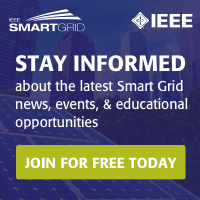Why is the Co-Production of Technological Systems and Architectures by the Public and Technology Communities Vital to the Success of the Smart Grid.
By Tim Kostyk
Leap frog 30 years into the future to a world where distributed localized power is converted into storable sources of energy which powers our homes and businesses while supplying fuel to our transportation systems. Energy has become relatively ubiquitous, reliable, and cheap, very much like communications and information has become today.
What does this say about how society will be structured and dispersed, how that structure will impact the energy infrastructure we are designing today, and, finally, how will we develop technological standards and regulations to support that infrastructure? Today’s failing electrical infrastructure lasted just over a hundred years before the original design became unreliable. The existing grid was built solely to support business using the technology innovations of that day. The Smart Grid we are designing for tomorrow will take 30-50 years to design and implement and will be built, 1) for people, 2) as a national security mechanism, and, 3) to aid business. This means that we need to reevaluate our design criteria and standards to inform design as a function of predictable or projected human societal or cultural changes. This will enable us to build a Smart Grid which is extensible and flexible, rather than finite and technologically bound.
The Co-Production of technological systems and architectures based upon the reconciling of functional requirements to human social and cultural impacts is not an easy endeavor to undertake. But as the impact of effort increases in magnitude, so does the possibility of failure if you do not take in account the relationship of the two.
How do we scope and formulate extensible flexible systems without becoming driven into a paralysis by analysis spiral? One possible way is by understanding that the complexity and depth of design does not mean that all possibilities have to be considered all at once to the same level of granularity. First, try and incorporate a composite set of design criteria which take note of the most relevant factors including social and cultural dimensions. These criteria then can be mapped to a set of underlying architectures and possible standards.
Here is one simplistic possible scenario that could be abstracted into a series of use cases to inform architectural and engineered standards and designs as to how dynamic human and technological systems may interact. It may sound futuristic but, bear in mind; all the technologies talked about are currently being fast tracked into development. The attached scenario should drive out a high-level architecture which has domains of human systems which can map to underlying technological architectures. The high-level architecture produced by this scenario should inform the necessary changes or impacts to human systems frameworks such as policy, and illuminate potential issues to consumers and the public at large.
Current DOE Energy Frontier Research Centers across the U.S, and other research efforts worldwide, produce a new family of technologies that enable solar energy to cheaply produce electricity and other forms of storable energy such as hydrogen or exotic fuels. The public, business, and government together foster the use of these technologies as mutually desirable. Through new building and architectural codes and regulations, local, regional and central governments require new homes and businesses to be built using these technologies. Governmental Public Utility Commissions modify regulatory frameworks to embrace the new technologies. During the day, electrical generation produced by solar voltaic systems across a neighborhood or small city supply electricity to home and businesses, and produce fuel at what used to be gas stations to meet transportation needs. These previous gas stations then become distributed hybrid fuel and electrical generation plants that can also provide local transmission and distribution services all in one. Transportation vehicles will feed back electricity into the local distribution systems through homes and businesses during times when electrical generation is not possible and the vehicle is idle. Finally, take this scenario and plug in other forms of renewable energy such as wind, hydroelectric.
Given this scenario, the architecture of many human and technology systems would need to be modified, not merely enabled, by Information and Communication Technologies (ICT). System architectures become very brittle when they do not look at the human dimension that interfaces with science and technology. This does not mean usability as a factor in the interface; it dives to the next layer of social and cultural context that talk about societal impact and standards of life. Together these aspects co-produce new realities which tend to drive out new innovative technologies. Only by looking at the co-productive nature of design through these aspects can we truly begin to build a more stable energy infrastructure that will serve us well into the future.


